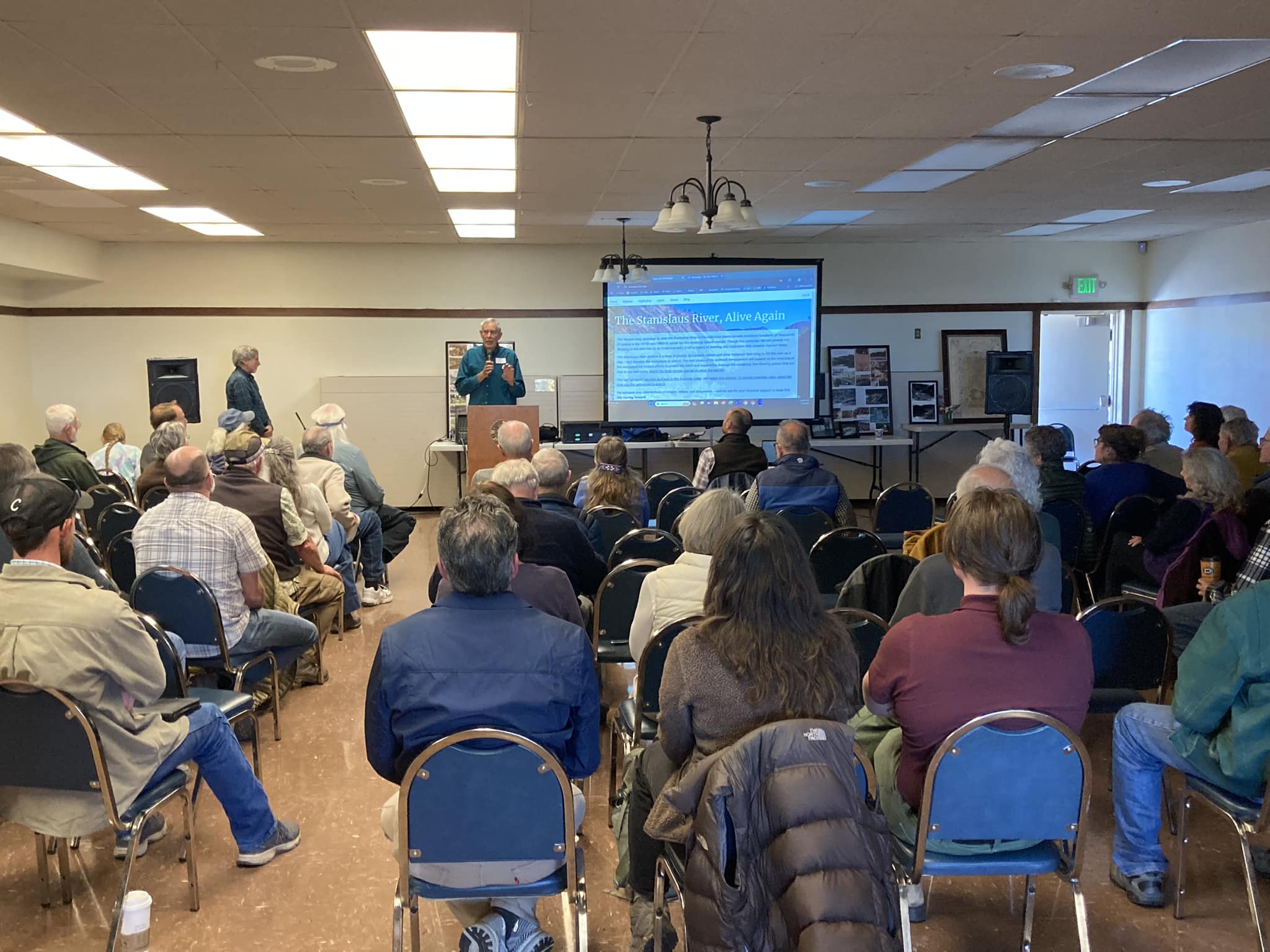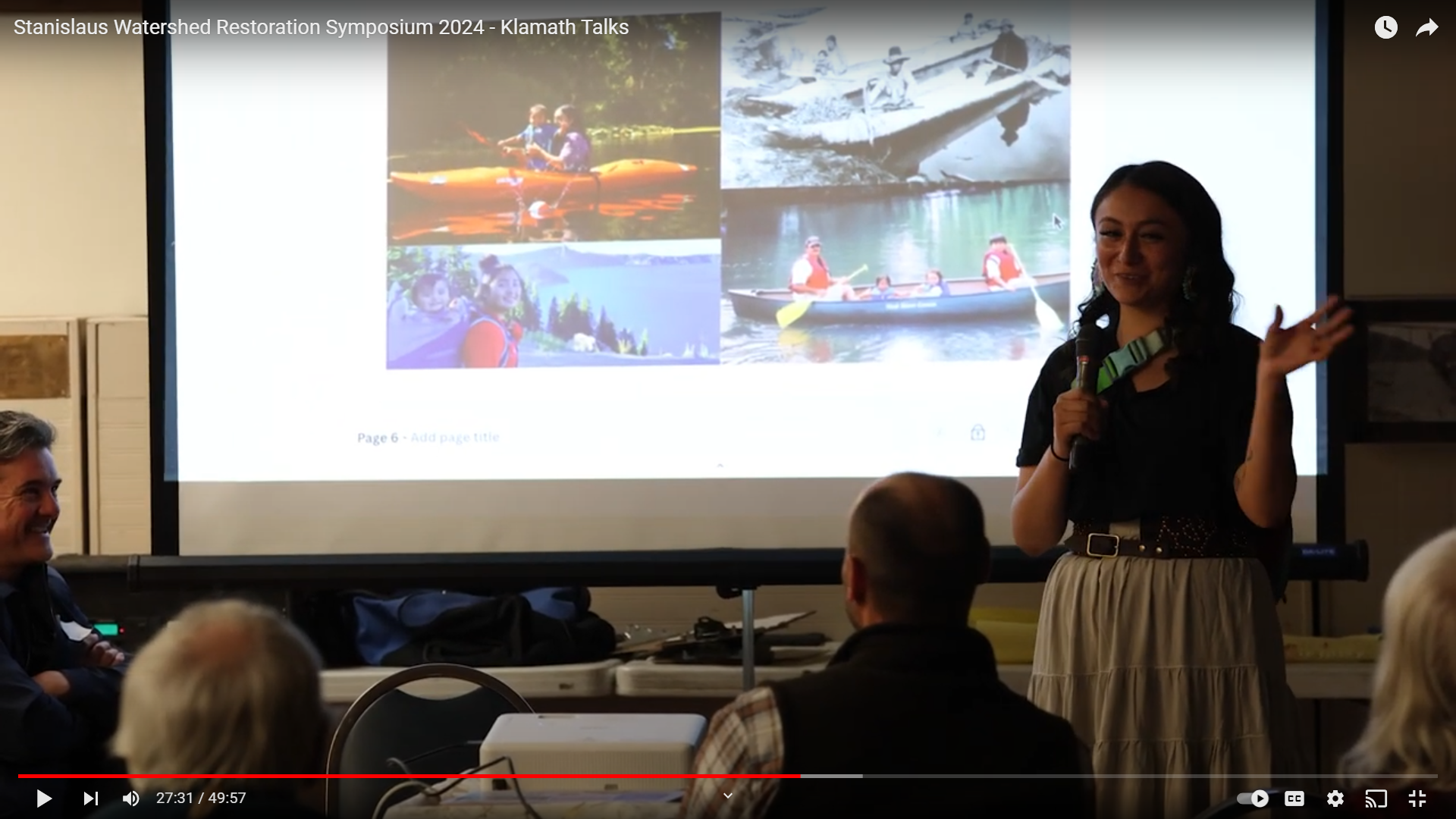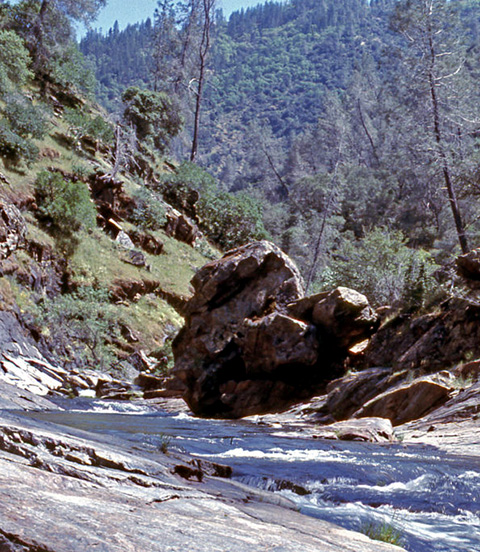~ fall 2025 ~
location TBD
A day planning the Stanislaus’ future
An evening celebrating the Klamath's renewal
We are organizing the second Restoring the Stanislaus Watershed Symposium for fall of 2025. This symposium will feature many of our findings from our recent efforts with partners who are engaged in restoring our river including flood plains on the lower river and beaver and meadow restoration on the upper river.
Here's an overview of our first symposium that took place on April 6, 2024 in Sonora, CA:
Our first Restoring the Stanislaus Watershed Symposium was an outstanding success. Attendance far exceeded our expectations including familiar, long-time activists and lots of new faces from the local area and afar. Our experts offered excellent presentations and discussions. And the many tribal members who joined us brought their much needed perspectives. Find a nice, detailed summary by Ty Childress below.
2024 Stanislaus Symposium Summary
by Ty Childress
On April 6, 2024 the non-profit organization Restoring the Stanislaus River held a symposium in Sonora, California. Over 80 people attended. Our president and CEO of Wind Harvest International, Kevin Wolf, welcomed those present and introduced Kyle Cox, Tuolumne Rancheria Band of Miwok Tribal Vice Chairman who started the event with a blessing.
He was followed by Mark Dubois, founder of International Rivers, who gave an overview of the agenda and goals of the symposium. Next was a virtual presentation by Dierdre Des Jardins, Director of California Water Research. She discussed the dramatic differences between looking at climate change data on a line graph, which averages out the year by year changes, versus looking at it on a bar graph, which gives a more accurate and eye-opening picture of climate fluctuations.
Joel Metzger, General Manager of Utica Power and Water followed with a PowerPoint overview of the dams, diversions, and hydropower projects in the watershed.
Richard Roos Collins, principal partner of the Water and Power Law Group spoke next about the historical and theoretical contexts for conjunctive use of New Melones water. That is, alternately using surface water and groundwater reserves in wet and dry years.
Fish and Wildlife biologist J.D. Wikert discussed the potential for anadromous fishery restoration on Stanislaus and San Joaquin Rivers.
Ron Goode, Tribal Chairman of the North Fork Mono Tribe, gave a riveting presentation. He said that if you cleared around oak trees (which are extremely sensitive to fire licking their bark), and conducted repeated, low-intensity burns, there was little chance of killing the larger trees. Traditional burning techniques require workers to wear full-body protective suits when burning. Oftentimes these fires get out of hand and kill the very trees they are trying to benefit. They also typically favor lumber trees (pines), rather than a mixed grill of hardwoods and softwoods.
Patrick Koepele, Executive Director of the Tuolumne River Trust, spoke about the theory and practice of upper watershed restoration and how it impacts water supply and flood control. A short Q & A session followed, facilitated by Sue Knaup.
Following lunch, three breakout sessions were conducted:
1. Lower river recreation and fish habitat restoration, led by California Fish and Wildlife Biologist, J.D. Wikert.
2. Using Cultural Fire Practices for upper watershed restoration, conducted by Ron Goode.
3. Conjunctive use of New Melones water by existing and future water users, led by Kevin Wolf, Richard Roos Collins, and Patrick Koepele.
⠀
Two more breakout sessions followed:
1. Salmon and Steelhead restoration and improvements on the lower Stanislaus, also with Kevin, J.D., and Richard.
2. Upper watershed restoration to increase water storage and flood reduction. Topics included the potential for meadow-restoration, possibly through the reintroduction of beavers into the high country and the removal of trees that have encroached upon these meadows⠀
A short wrap-up panel talked about creating a new generation of activists, creating large pools of money for restoration efforts, having a long-term vision and a love of place, and how to actually get such restoration accomplished. Stephanie Seuss, an employee of Chicken Ranch Rancheria expressed her concern that if the level of New Melones Reservoir were lowered, the Tribe would not have access to the water in the reservoir that she thinks the Rancheria deserves.
After dinner, three members from the Klamath River area, Ashia Grae Wolf Wilson (Klamath Tribal member), Sammy Gensaw III (Yurok), and his brother Jon Luke Gensaw (Yurok) arrived to discuss their amazing and successful, 20-year effort to remove the four Copco Dams on the Klamath and their watershed restoration efforts. Their presentations were introduced by Craig Tucker who showed slides of the campaign. This was the largest dam-removal project in world history! Sammy and Jon Luke are founding members of the Ancestral Guard, keepers of cultural knowledge. Find the video of their session here and also linked in the image to the right.
Ashia is an amazingly passionate 21-year-old member of Rios to Rivers, a group of river stewards with roots in North and South America. She graduated from high school at 16 and was given a full-ride scholarship to the University of Oregon. In spite of their successful restoration efforts, her tribal members, to this day, do not have access to unpolluted drinking water.
Sammy is a fisherman and environmental activist and instrumental in the removal of the Copco Dams. He is a founding member of the Ancestral Guard, keepers of cultural knowledge.
Jon Luke, also a founding member of the Ancestral Guard, is a new father, fisherman, regalia maker and artist. Everything he does is rooted in native culture. He sang a powerful song for us at the convocation.
Also in attendance were Jann Dorman from Friends of the River, Trina Walley (Calaveras and Stanislaus Resource Conservation Districts), Craig Tucker (PHD consultant to the Karuk Tribe), and Kat Anderson (author of Tending the Wild and U.C. Davis ethnobotanist with the Department of Plant Sciences).
Representatives from six California tribes joined us to share their wisdom: Ron Goode and his wife Myra, Arvada Fisher (Valley Miwok basket and regalia maker and Forest Service employee on the Stanislaus River), Cynthia Reyes (Pima cultural preservation expert with the Chicken Ranch Rancheria), Jason Deschler (Coastal Miwok cultural preservation expert), Kyle Cox (Tuolumne Band Mewuk Tribal Council vice-chairman), Wesley Dunn (Chicken Ranch Rancheria Tribal member), and Elissa Simons (Coastal Miwok cinematographer and producer).
Throughout the event, attendees bid on silent auction items to raise funds for our continuing efforts at river restoration. River trips were donated by OARS, Zephyr, and All Outdoors. Stanislaus photographs captured before the drowning; native plants and a granddaughter clone of the Stanislaus River Duck Bar fig tree grown by Jayne Childress; a white sage plant grown by Kaitlin Ortega; a pine nut necklace created by Cynthia Reyes; and a special Stanislaus River bottle of wine from Randy Nathan were also auctioned off.
The symposium was filmed by Jeff Kelogi (Access Tuolumne), Elissa Simons, and Ria Rice Lawson. The Chicken Ranch Rancheria Me-Wuk Indians of California and the Tuolumne Band of Me-wuk Indians were sponsors, helping to cover expenses for the Klamath watershed tribal participants to join us.
The event’s meals were expertly organized and run by volunteers Fred and Jacqueline Dennis, Cris Barsanti, Barranca Wren, Paul Barth, Linda Dyken and Jane Ferguson. The dinner was catered by Doug Vanderberg.





